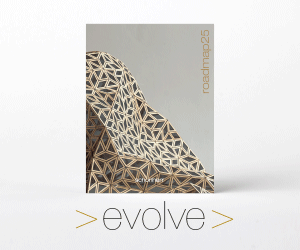
Introduction
Before the advent of cinematography, fictional characters were portrayed in literature and the traditional visual arts, such as painting and sculpture.
Fictional characters range from the generic to the individualized. The more individualized a fictional character, the easily it gets recognized by the public, and, as such, the more likely it is for it to benefit from legal protection.
The legal protection of fictional characters as separate from the legal protection awarded the works in which these fictional characters are encountered is recognised in countries such as the United States of America and France.
This article explores whether such protection may be granted to fictional characters under Romanian law.
Fictional characters as works in their own right
Under Romanian law, intellectual creations in the literary, artistic or scientific domain, further referred to as works, are mainly protected by copyright. There is no legal definition of a work, either in Romanian, or in European law. However, some conditions that make a work benefit from copyright protection have crystallized in the relevant case-law.
First, a work must be original, in the sense that it is the author’s own intellectual creation. It is both necessary and sufficient that the subject matter reflects the personality of its author, as an expression of his free and creative choices. When the realisation of a subject matter has been dictated by technical considerations, rules or other constraints, which have left no room for creative freedom, that subject cannot be regarded as possessing the originality required for it to constitute a work.
Second, the subject matter protected by copyright must be expressed in a manner that makes it identifiable with sufficient precision and objectivity, even though that expression is not necessarily in permanent form. That is because, the authorities responsible for ensuring that the exclusive rights inherent in copyright are protected must be able to identify, clearly and precisely, the subject matter protected. So must third parties against whom the protection claimed by the author of that subject matter may be asserted. There is also the need to ensure that there is no element of subjectivity, in the process of identifying the subject matter. Objectivity is not attained where an identification is essentially based on the sensations, which are intrinsically subjective, of an individual who perceives the subject matter at issue.
Theoretically, if a fictional character has enough imbued originality and has a sufficient objective representation, then it could be protected as a work in its own right, independent of the story presenting the character.
Both conditions may be met more easily by visual/animated/3D characters than by literary characters, since the appearance of a literary character is much left to the imagination of the reader. Nevertheless, there have been many instances where courts have recognised literary characters as being worthy of their own copyright.
Fictional character protection in the real world
In existing case-law, especially case-law originating from the United States of America, fictional character protection has been recognized in court.
As early as 1930, American courts found that stock characters do not benefit from copyright protection. In Nichols versus Universal Pictures Corporation, the plaintiff alleged infringement of her copyright over a play by another play. The judge stated that, although the protection of literature cannot be limited to the exact text, else an infringer would get away with copying by making immaterial variations. However, “the less the developed the characters, the less they can be copyrighted; that is the penalty an author must bear for marking them too indistinctly”. It was also deemed that the characters in the plaintiff’s play, “the low comedy Jew and Irishman” and lovers who were “so faintly indicated as to be no more than stage proprieties. They are loving and fertile< that is really all that can be said of them, and anyone else is quite within his rights if he puts loving and fertile lovers in a play of his own, wherever he gets the cue”, were stock figures.
On the other hand, in a case dated 1981, the United States District Court for the Southern District of New York found that the Tarzan character from the eponymous works by Edgar Burroughs Rice was copyrightable: “It is beyond cavil that the character "Tarzan" is delineated in a sufficiently distinctive fashion to be copyrightable. […]. Tarzan is the ape-man. He is an individual closely in tune with his jungle environment, able to communicate with animals yet able to experience human emotions. He is athletic, innocent, youthful, gentle and strong. He is Tarzan.”.
Visual characters like Superman are found to be even easier to be copyrightable than purely literary characters: “So far as the pictorial representations and verbal descriptions of "Superman" are not a mere delineation of a benevolent Hercules, but embody an arrangement of incidents and literary expressions original with the author, they are proper subjects of copyright and susceptible of infringement”.
And even inanimate objects that are precisely identifiable were deemed as copyrightable. The Batmobile is a good example: “DC Comics (DC) is the publisher and copyright owner of comic books featuring the story of the world-famous character, Batman. […] Originally introduced in the Batman comic books in 1941, the Batmobile is a fictional, high-tech automobile that Batman employs as his primary mode of transportation. The Batmobile has varied in appearance over the years, but its name and key characteristics as Batman's personal crime-fighting vehicle have remained consistent.”
The defendant Mark Towle Defendant produced replicas of the Batmobile as it appeared in a 1966 television show and in a 1989 motion picture. In May 2011, DC filed an action against Towle, alleging copyright infringement, trademark infringement, and unfair competition arising from Towle's manufacture and sale of the Batmobile replicas.
Citing its previous jurisprudence, the court in that case held that “Not every comic book, television, or motion picture character is entitled to copyright protection. We have held that copyright protection is available only “for characters that are especially distinctive. […] To meet this standard, a character must be “sufficiently delineated” and display “consistent, widely identifiable traits.” […]. A masked magician “dressed in standard magician garb” whose role “is limited to performing and revealing the magic tricks,” for example, is not “an ‘especially distinct’ character differing from an ordinary magician in a manner that warrants copyright protection.” Further, characters that have been “lightly sketched” and lack descriptions may not merit copyright protection.”.
In respect to the Batmobile’s copyrightability, the court had applied a three-pronged test:
the character must possess both physical and conceptual traits;
the character “must be “sufficiently delineated” to be recognizable as the same character whenever it appears” – to the extent appearance of the character changes, the attributes must be consistent and identifiable;
the character must be “especially distinctive” and “contain some unique elements of expression.”
The Batmobile was found to check all three tests, because:
it has the physical traits of being a three-dimensional car, having been represented in movies and cartoons, and is not merely a literary character;
it is sufficiently delineated because “is almost always bat-like in appearance, with a bat-themed front end, bat wings extending from the top or back of the car, exaggerated fenders, a curved windshield, and bat emblems on the vehicle. This bat-like appearance has been a consistent theme throughout the comic books, television series, and motion picture, even though the precise nature of the bat-like characteristics have changed from time to time”, contains the most up-to-date weaponry and gadgets and it “is a “crime-fighting” car with sleek and powerful characteristics that allow Batman to maneuver quickly while he fights villains”;
because of its distinctive name, being Batman’s sidekick and even an extension of Batman’s personality, the Batmobile is not a stock character.
As stated above, appearance must not always be the same for characters to be protected in the United States of America: “The character “James Bond” qualifies for copyright protection because, no matter what the actor who portrays this character looks like, James Bond always maintains his “cold-bloodedness; his overt sexuality; his love of martinis ‘shaken, not stirred;’ his marksmanship; his ‘license to kill’ and use of guns; his physical strength; [and] his sophistication.” […] Similarly, while the character “Godzilla” may have a different appearance from time to time, it is entitled to copyright protection because it “is always a pre-historic, fire-breathing, gigantic dinosaur alive and well in the modern world.” […] In short, although James Bond's, Godzilla's, and Batman's “costume and character have evolved over the years, [they have] retained unique, protectable characteristics” and are therefore entitled to copyright protection as characters.”
In Canada, courts recognize a distinction between characters that are graphically or sculpturally represented (which are recognized as works of art, benefitting from legal protection and which may easily be compared visually), and literary characters (which may benefit from legal protection under certain conditions, for example: (i) being included in a protected literary work and being an important part of that work and (ii) that the character is sufficiently well-developed).
Recognizing character protection under Romanian copyright
As explained above, Romanian legislation does not offer fictional characters express protection.
However, there is no reason why the criteria applied by foreign courts in imbuing characters with copyright protection would not also be compatible with Romanian legislation.
Therefore, the conditions identified by American and Canadian courts should apply also to characters in Romanian literature and art. Characters that are delineated, recognizable and distinctive should be protected under Romanian copyright legislation, while stock characters should be devoid of such protection.
Characters in literature are harder to protect than those in the visual arts. Fairy-tale characters such as “Făt Frumos”, “Muma Pădurii”, “Ileana Cosânzeana” are archetypes representing ideal heroes and antagonists whose traits are generic even when stories in which they appear are original.
Nevertheless, it is not impossible for such characters to be further developed so that they benefit from copyright protection. For example, the authors and editors of a professional Romanian comics magazine used the character “Harap Alb”, a traditional hero first depicted in the homonymous story by the writer Ion Creangă in 1877, to create new stories and adventures of the characters, in comic book form. Even though anyone is able to use the original story of Harap Alb, the name and the characters, since the story is in the public domain, the depiction of the characters in the “HAC!” illustrated magazine may be deemed original and may benefit from copyright protection. Such protection would still not be of the characters in themselves, but of the rendering of the character by the magazine illustrators and storytellers.
In relation to visual characters, another example in recent Romanian pop culture is the animated series “RObotzi” produced by Ramona Cordos and Codin Sebastian Pop. The series depicts two robots made in Romania, MO and F.O.C.A., living in a deposit of the National Institute of Robotics. The characters have distinctive physical attributes (MO is orange and is depicted as rusted from too much alcohol, F.O.C.A. is blue and has a more advanced design), as well as character traits (MO is superficial and anxious, while F.O.C.A. is mostly calm and intellectual), both using intelligent, albeit often vulgar, humour.
The characters in RObotzi were the driving forces of the show, and not the situations they are put in or the events of the story. Moreover, the five-season series was viewed millions of times by the Romanian public, and it may be argued that it has a wide recognition.
Therefore, it could be argued that such recognizable characters should benefit from copyright protection out of the context of their original setting.
Conclusions
Recognizing copyright protection of fictional characters is an exercise in balancing the interests of the public and the ones of the author. In order to benefit from such protection, authors are encouraged to make their characters memorable, to flesh out their physical and character attributes. Otherwise, the public interest of allowing ideas to circulate freely takes precedence.
Copyright over fictional characters is especially important when moving the characters from their original source material to other outlets, such as derived works (for example, new stories, sequels, prequels etc.) or when using them for merchandising.
While it is true that Romania does not have a very well-developed character-driven market, it does not mean that protection for such characters would not be recognised should the appropriate context arise. Romanian content creators should strive to create original characters and explore different means of monetizing their creations.
article written by Flavia Ștefura, Senior Associate MPR Partners



 March 15, 2021 13:30
March 15, 2021 13:30 










